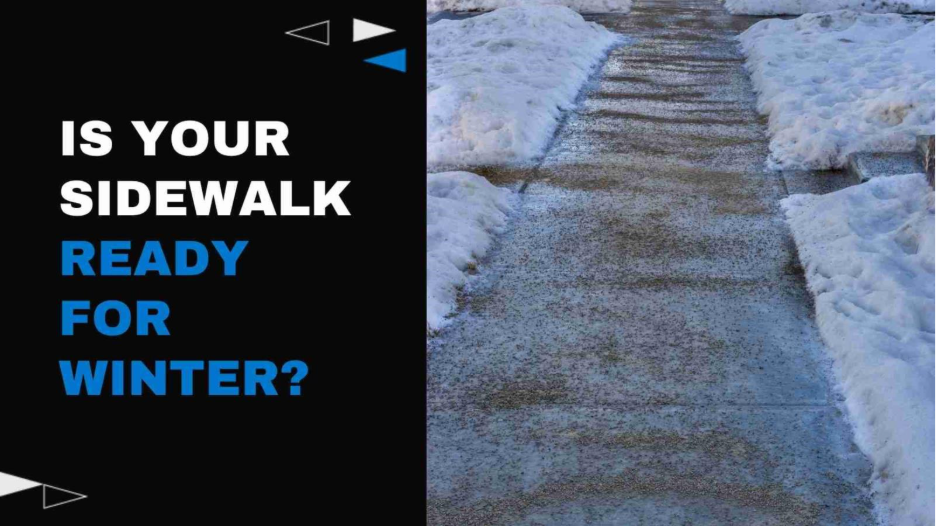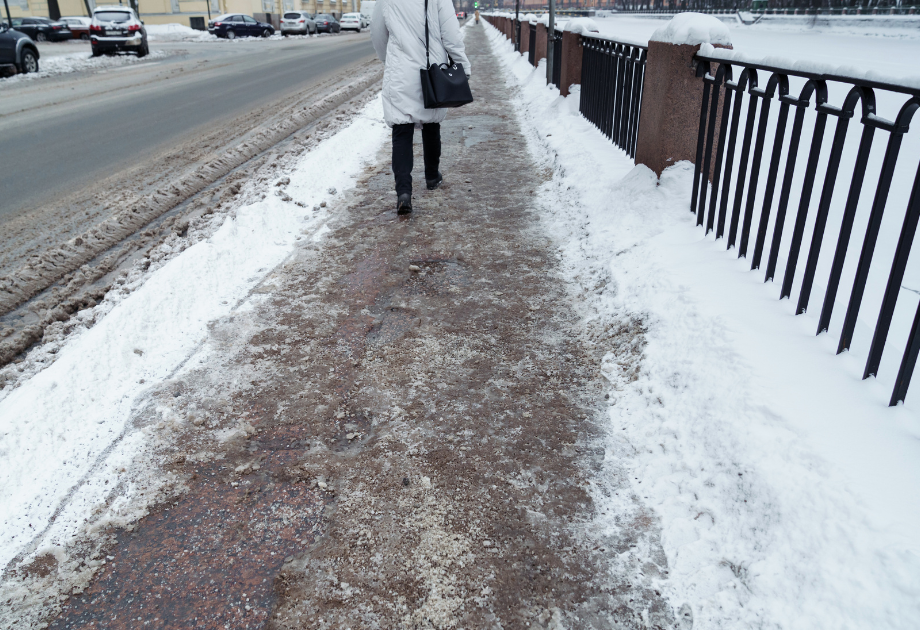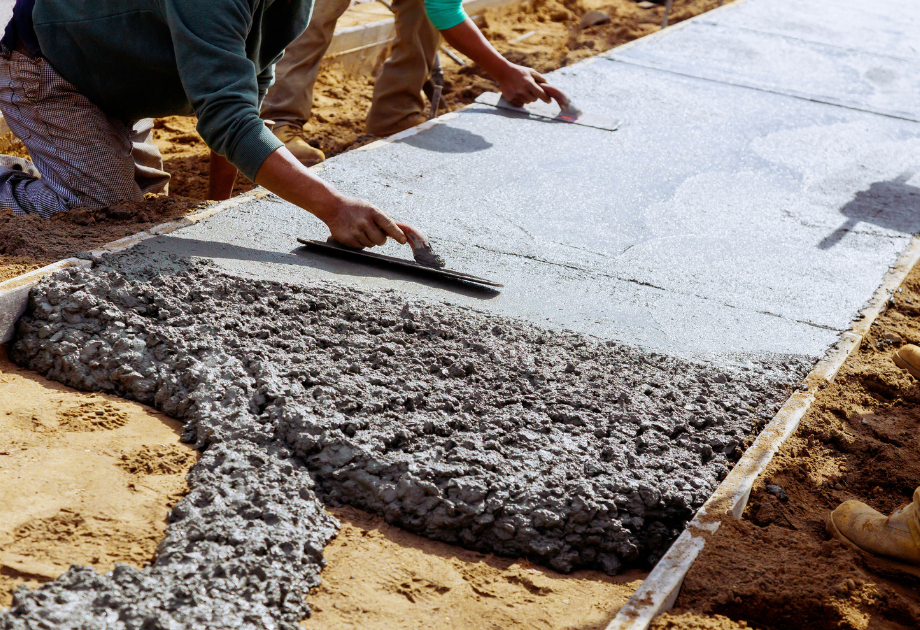Is Your Sidewalk Ready for Winter? How to Stay ADA Compliant and Safe This Season
Is Your Sidewalk Ready for Winter? How to Stay ADA Compliant and Safe This Season

Sidewalks aren’t flashy, but they carry a lot of responsibility. They provide safe routes for visitors, employees, and residents throughout the year. Once winter sets in, ice, snow, and surface damage turn that routine into a safety concern and a compliance issue. For property managers, HOAs, and facility leaders, that means sidewalks deserve attention before the season hits full stride.
ADA compliance is at the heart of winter sidewalk planning. The law requires walkways stay accessible for everyone, even in the toughest conditions. That means clear width, stable footing, and routes free from snow piles or standing ice. For property managers and HOAs, meeting these standards is not just about avoiding fines. It shows a commitment to keeping people safe and protecting the reputation of the property.
At Pinnacle Paving & Sealing, we help property teams set the standard in winter readiness. This guide highlights the most common cold-weather challenges, explains what ADA sidewalk requirements mean in practice, and lays out steps that keep walkways safe and accessible all season long.
Why ADA Sidewalk Safety Matters in Winter
Winter puts sidewalks under extra stress, but ADA standards still apply no matter the weather. Walkways need to stay wide enough for access, firm underfoot, and free of blockages. Ice, packed snow, and repeated freeze and thaw cycles all put these requirements at risk.
For people using mobility devices or pushing strollers, even a thin layer of ice can make a path unusable. Keeping up with ADA standards protects access for everyone and also reduces liability concerns for property teams. Slip-and-fall incidents are one risk, and accessibility complaints are another. Having a winter plan that supports sidewalk safety is good risk control and good service to your community.

Winter Challenges That Put ADA Compliance at Risk
Cold weather brings a few sidewalk problems that show up again and again. Each one makes walkways harder to use and can knock them out of ADA compliance.
- Snow piles push into walkways and cover curb ramps. As they melt and refreeze, they leave slick spots across the route.
- Cracks and uneven panels worsen when water freezes inside them, turning small flaws into trip hazards.
- Drainage problems create ice patches that block safe travel. Clearing downspouts or adding a curb drain helps keep water moving away from walkways.
Catching these problems early makes it much easier to keep sidewalks safe and accessible all winter.
How to Keep Sidewalks ADA Compliant All Winter
The best way to stay compliant in winter is to plan ahead. Walkways need to stay continuous, smooth, and free of ice or snow buildup. Inspections, timely repairs, and smart snow management all work together to make sure routes stay open when you need them most.
Inspect and Repair Before Temperatures Drop
Walk your routes and look for cracks, broken edges, and low spots. Fixing these early prevents them from getting worse once freezing starts. Schedule sidewalk crack repair, use sidewalk leveling for panels that have settled, or replace badly damaged sections. It’s also a good time to confirm required sidewalk width in tight areas like entries or between bollards.
Plan Snow and Ice Management That Supports Compliance
Snow removal should be planned around access. Clear routes quickly, store piles away from walkways, and use products that protect the surface. A concrete-safe ice melt is a better choice than harsh salts and helps answer the common question of how to protect concrete from salt damage. Crews with clear steps for snow removal on sidewalks keep access reliable all season.

Keep Water Moving Away from Walkways
Standing water turns into ice. Make sure downspouts do not drain across walkways and that low spots are corrected. Adding a concrete drainage feature or small curb drain helps move water off the route and away from doors.
Long-Term ADA Compliance Starts with Structural Solutions
Plowing and deicing handle the day-to-day weather. Long-term ADA compliance comes from stronger structure and better water control.
Cracked panels, uneven joints, and poor drainage are the common reasons sidewalks fail to meet standards. Structural repairs such as sidewalk leveling, sealing joints and cracks, or fully fixing sidewalk concrete last longer and cost less over time. Protect the surface you already have by choosing the right materials and applying winter care methods like measured use of a concrete safe ice melt.
ADA Priorities for Multifamily, Retail, and Campus Properties
Different property types face different pressures, but ADA standards apply to all public properties. Apartment communities need clear routes from parking to mailrooms and amenities. Retail centers rely on open walkways to storefronts and crosswalks. Schools, hospitals, and municipal campuses depend on safe, usable paths for students, patients, staff, and visitors.
At Pinnacle Paving & Sealing, we help managers and facility leaders build plans that focus on ADA standards. We map accessible routes, set response targets, and work with snow teams to keep sidewalks usable. We focus on high-traffic areas, like curb ramps and entries, so access stays consistent even during heavy storms.

Work with Pinnacle Paving for ADA-Ready Sidewalks
Keeping sidewalks compliant during winter takes planning, experience, and a clear understanding of accessibility standards. Our crews bring decades of work in concrete repair, drainage upgrades, and ADA-focused improvements across commercial, multifamily, and municipal sites.
What you can expect from us:
- Seasonal assessments that identify risks early
- Repairs that restore access and keep sidewalks ADA aligned
- Drainage fixes that stop recurring ice at entries and walk routes
- Clear bids, dependable schedules, and crews who respect your property
On Time. On Budget. On Point.
Schedule Your ADA Sidewalk Assessment with Pinnacle Paving
The strongest winter plans start before storms arrive. A seasonal assessment shows where sidewalks need repair, how water should be managed, and what steps will keep routes compliant and safe.
We partner with property managers, HOAs, and facility leaders to create plans that reduce liability and keep people moving.
Ready to take the next step? Talk with our team to schedule your sidewalk assessment and finish preparing for snow with confidence.

